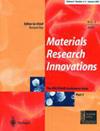基于过期绿豆衍生多孔碳修饰玻碳电极的甲基对硫磷电化学传感器设计
Q2 Engineering
引用次数: 0
摘要
本文报道了一种基于过期绿豆衍生多孔碳修饰玻碳电极(GCE)的简单灵敏的甲基对硫磷(MP)电化学传感器。在所制备的MDPC/GCE传感器中,MDPC呈现出具有良好导电性的三维互连多孔碳结构,提供了更高效的电荷转移通道。此外,三维互联多孔碳结构有助于提高传感电极的比表面积和吸附能力。在最优条件下,制备的MDPC/GCE传感器具有良好的MP检测性能,检测限为13.2 nM(线性MP浓度为0.1 ~ 11 μM)。制备的MP电化学传感器具有良好的再现性和重复性,相对标准偏差较低,分别为4.08%和2.14%。制备的MDPC/GCE传感器具有良好的实用性能,回收率为96.2 ~ 98.8%,相对标准偏差为1.92 ~ 4.61。本文章由计算机程序翻译,如有差异,请以英文原文为准。
Design of methyl parathion electrochemical sensor based on expired mung bean-derived porous carbon modified glassy carbon electrode
ABSTRACT Herein, we reported a simple and sensitive methyl parathion (MP) electrochemical sensor based on the expired mung bean-derived porous carbon (MDPC)-modified glassy carbon electrode (GCE). For the fabricated MDPC/GCE sensor, MDPC presented three-dimensional (3D) interconnected porous carbon structure with good electrical conductivity, which provided more efficient charge transfer channels. Moreover, 3D interconnected porous carbon structure could help enhance the specific surface area and adsorption capacity of sensing electrode. Under the optimal conditions, the fabricated MDPC/GCE sensor showed good MP detection property with acceptable limit of detection of 13.2 nM (Linear MP concentration: 0.1–11 μM). Moreover, the fabricated MP electrochemical sensor presented good reproducibility and repeatability with relatively low relative standard deviation of 4.08% and 2.14%, respectively. The good practical performance could be realised at the fabricated MDPC/GCE sensor with satisfactory recovery (96.2–98.8%) and relative standard deviation (1.92–4.61) for the detection of MP in lake water sample.
求助全文
通过发布文献求助,成功后即可免费获取论文全文。
去求助
来源期刊

Materials Research Innovations
工程技术-材料科学:综合
CiteScore
5.20
自引率
0.00%
发文量
38
审稿时长
2.8 months
期刊介绍:
Materials Research Innovations covers all areas of materials research with a particular interest in synthesis, processing, and properties from the nanoscale to the microscale to the bulk. Coverage includes all classes of material – ceramics, metals, and polymers; semiconductors and other functional materials; organic and inorganic materials – alone or in combination as composites. Innovation in composition and processing to impart special properties to bulk materials and coatings, and for innovative applications in technology, represents a strong focus. The journal attempts to balance enduring themes of science and engineering with the innovation provided by such areas of research activity.
 求助内容:
求助内容: 应助结果提醒方式:
应助结果提醒方式:


